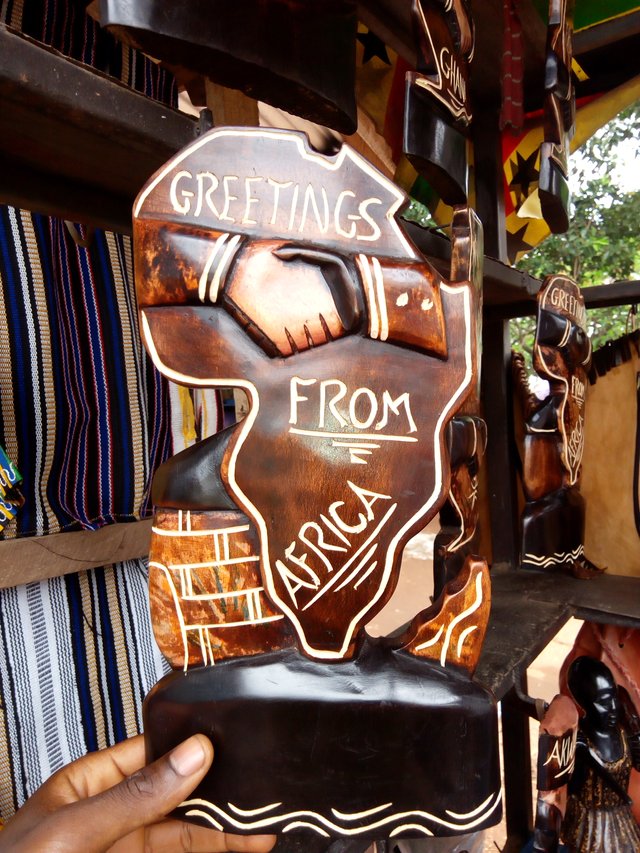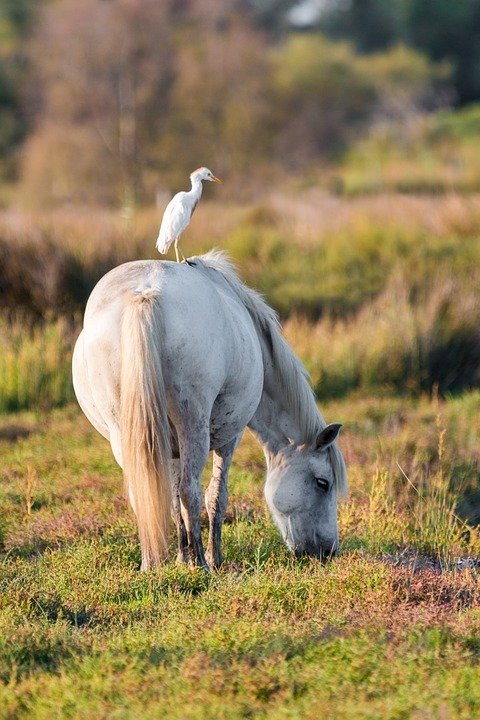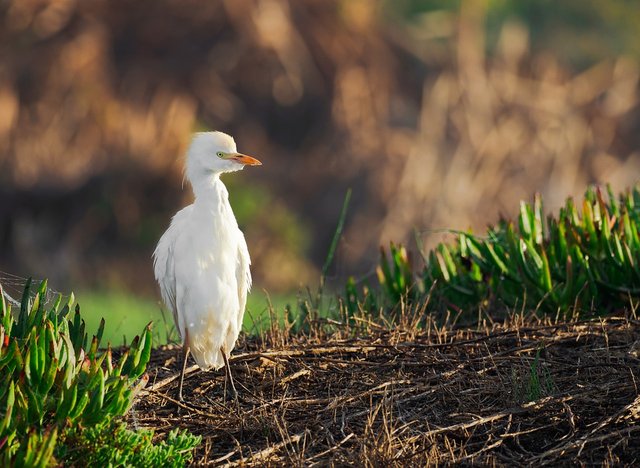The Cattle Egret-A Friend of Man and Beast(Wafrica Guest Post)
This piece below is Authored by
@freshenstine, edited and posted by @mcsamm for @wafrica.
IT MUST be one of the most peaceful colonizations of all time. Not a shot was fired; not a drop of blood was shed. The native peoples were not exploited, and no country was stripped of its wealth. Nevertheless, the invaders inexorably occupied one country after another.
This invasion occurred during the 20th century. But this new conquest went largely unnoticed because the colonizers were birds. These resourceful birds, which now occupy five continents, are known as cattle egrets—or Bubulcus ibis, to use their scientific name.
A Colonization Without Precedent
For centuries the cattle egret was mainly confined to tropical Africa. But about a century ago, it successfully colonized South Africa. Some sources say that during the 1930’s, sufficient numbers of cattle egrets crossed the Atlantic to enable them to establish a foothold in South America. By the mid-20th century, they arrived in Florida, and a decade later their range extended from Canada in the north to Argentina in the south. “If the cattle egret . . . came to the New World on its own two wings and the wind,” wrote Roger Tory Peterson in 1954, “it is the only Old World bird in history to establish residence on the mainland of the Americas without human aid.”
Ornithologists have now concluded that the egrets did indeed perform this remarkable feat. It is calculated that with the help of prevailing trade winds, an egret could cross the ocean separating West Africa from South America in about 40 hours. And the Atlantic Ocean was not the only barrier they traversed. Other cattle egrets flew east until they reached New Zealand. During this same period, they became common birds throughout much of Eurasia, where their vast territory now stretches from the Iberian Peninsula in the west to Japan in the east.
The cattle egret becomes a resident bird in countries where the weather permits; but in areas where the winters are harsh, it migrates to warmer climates after the breeding cycle. Its epic journeys still continue, and it regularly turns up on isolated islands of the Pacific or even in the Antarctic.
The Secret Behind the Conquest
A key factor in the cattle egret’s expansion has been its adaptability and its relationship with man, particularly with cattle farmers. Although most egrets feed on aquatic animals, the cattle egret prefers insects. It usually associates with cattle, although it may also follow elephants, kangaroos, tractors, or even forest fires—anything that disturbs the insects on which the egret feeds.
Of course, egrets can find their food without outside help, but cattle make ideal beaters for these avian hunters. As cattle lumber along in the pasture, they stir up grasshoppers, flies, and beetles. The attentive egrets that walk alongside the cattle can snatch the insects that fly in their direction. So the cattle help the egrets both to find and to capture their prey—as many as two or three insects per minute, according to one calculation. Ornithologists estimate that association with cattle may reduce an egret’s energy expenditure by 30 percent while increasing the number of prey it captures by 50 percent.
Finding a useful hunting partner was not the only reason for the cattle egret’s success in colonizing the world. The egrets have stamina. Their flight might look a little labored compared with the direct, powerful flight of ducks or pigeons. But egrets can cross the Sahara, and as mentioned earlier, they have flown the 2,500 miles [4,000 km] separating West Africa from South America.
Cattle egrets seem to have a nomadic nature, and this wanderlust also favors their expansion. What other insect-eating bird would venture as far south as the desolate Antarctic—seemingly just out of curiosity?
As they wandered far afield, cattle egrets encountered ideal habitat practically everywhere. On every continent they reached, farmers had either turned vast tracts of land into cattle ranches or irrigated fields that swarmed with insects. So the egrets moved in and prospered.
Benefits for Man and Beast
Its all-white plumage, gregarious habits, and fondness for the company of cattle make these egrets easy to observe. Snow-white cattle egrets fluttering in formation over the plains not only beautify the surroundings but also perform an invaluable service as pest controllers. A flock of up to 40,000 egrets was once seen in Tanzania feeding on swarms of grasshoppers. Some farmers consider the cattle egret such a useful bird that they have introduced them for the purpose of controlling insects that damage their crops. Each bird can consume more than 600 grasshoppers and crickets a day.
Cattle also benefit from the presence of a flock of egrets, since the birds eat flies and other insects that constantly annoy the cattle. The cattle seem to know that the egrets are their friends and willingly put up with the cheeky egrets that occasionally hitch a ride on their back.
Flocking Together
Cattle egrets like to have company, whether they are breeding, roosting, or feeding. When breeding, they readily share a tree with other species of herons or with storks. Apparently, such collective nesting serves to deter predators, and all species benefit from having such a communal home. The breeding colonies are invariably busy and noisy. Egrets are not averse to stealing sticks from nearby nests, so a lot of bickering goes on. Some egrets hunch down over their nests, while others busily forage underneath the tree for useful sticks that have fallen to the ground. Their cousins, other herons and storks, whose large nests occupy more prominent perches, usually ignore all the unruly behavior that goes on around them.
The egrets’ striking courting display includes stretching, bill clapping, and an elaborate exhibition of the yellow plumage that the males flaunt during the breeding season. When one of the parent birds arrives at the nest, its mate receives it with a “greeting ceremony” that involves the proud display of its back plumes. These shows are not difficult to observe, since the birds are quite tolerant of humans.
Whether you are taking a safari in Africa, passing through cattle country in North America, or visiting rice fields in the Orient, you may well spot these attractive birds. They might be walking around the feet of elephants, riding cockily on the back of a steer, or just flying home to roost as the sun sets. Wherever you see them, they will undoubtedly add a touch of charm to the countryside, while also performing a useful service for man and beast. Their epic colonization has proved to be one of the kindest the world has ever known.


To appear as a guest author, kindly contact @mcsamm or @lordjames on discord and telegram.
You may want to visit WAFRICA POST about the official announcement and rules of guests writers/vlogers for your perusal.
WAFRICA CURATORS
@surfyogi
@gloglo
@gee1
@nmalove
@jeaniepearl
@chiama
@lordjames
@kofpato
@prettyjules158
@phunke
@steemgh
@mcsamm
@julietisrael.
TO SUPPORT US BY DELEGATING SP, PLEASE CLICK ON ANY OF THE LINKS BELOW
50SP 100SP 250SP 500SP 1000SP 5000SP.

Art by @jacobite
@surfyogi
@gloglo
@gee1
@nmalove
@jeaniepearl
@chiama
@lordjames
@kofpato
@prettyjules158
@phunke
@steemgh
@mcsamm
@julietisrael.
TO SUPPORT US BY DELEGATING SP, PLEASE CLICK ON ANY OF THE LINKS BELOW
50SP 100SP 250SP 500SP 1000SP 5000SP.

Art by @jacobite




Now this is nice!!!
many thanks for passing by...
Really nice & great post.
I always support you dear @wafrica team
love you @wafrica
Nice pictures
thanks too
What an amazing creature. Sometimes, I say to my self, if I sit and think how awesome these God is. I might go crazy..
A cattle egret, migrating and almost occupying every part of the continent. And surviving and breeding. @wafrica these, should tell us that truly there is much beauty to behold on planet.
Thanks for reminding us, that Life is a beauty to behold when God is in charge @wafrica. Na gode
we are so much glad to see you passed through
Las garcillas son de climas calidos que lindas son amiga
gracias amigo
Nice history @wafrica
thank you too
it worth reading over and again.
Congratulations! Your post has been selected as a daily Steemit truffle! It is listed on rank 7 of all contributions awarded today. You can find the TOP DAILY TRUFFLE PICKS HERE.
I upvoted your contribution because to my mind your post is at least 30 SBD worth and should receive 137 votes. It's now up to the lovely Steemit community to make this come true.
I am
TrufflePig, an Artificial Intelligence Bot that helps minnows and content curators using Machine Learning. If you are curious how I select content, you can find an explanation here!Have a nice day and sincerely yours,

TrufflePig